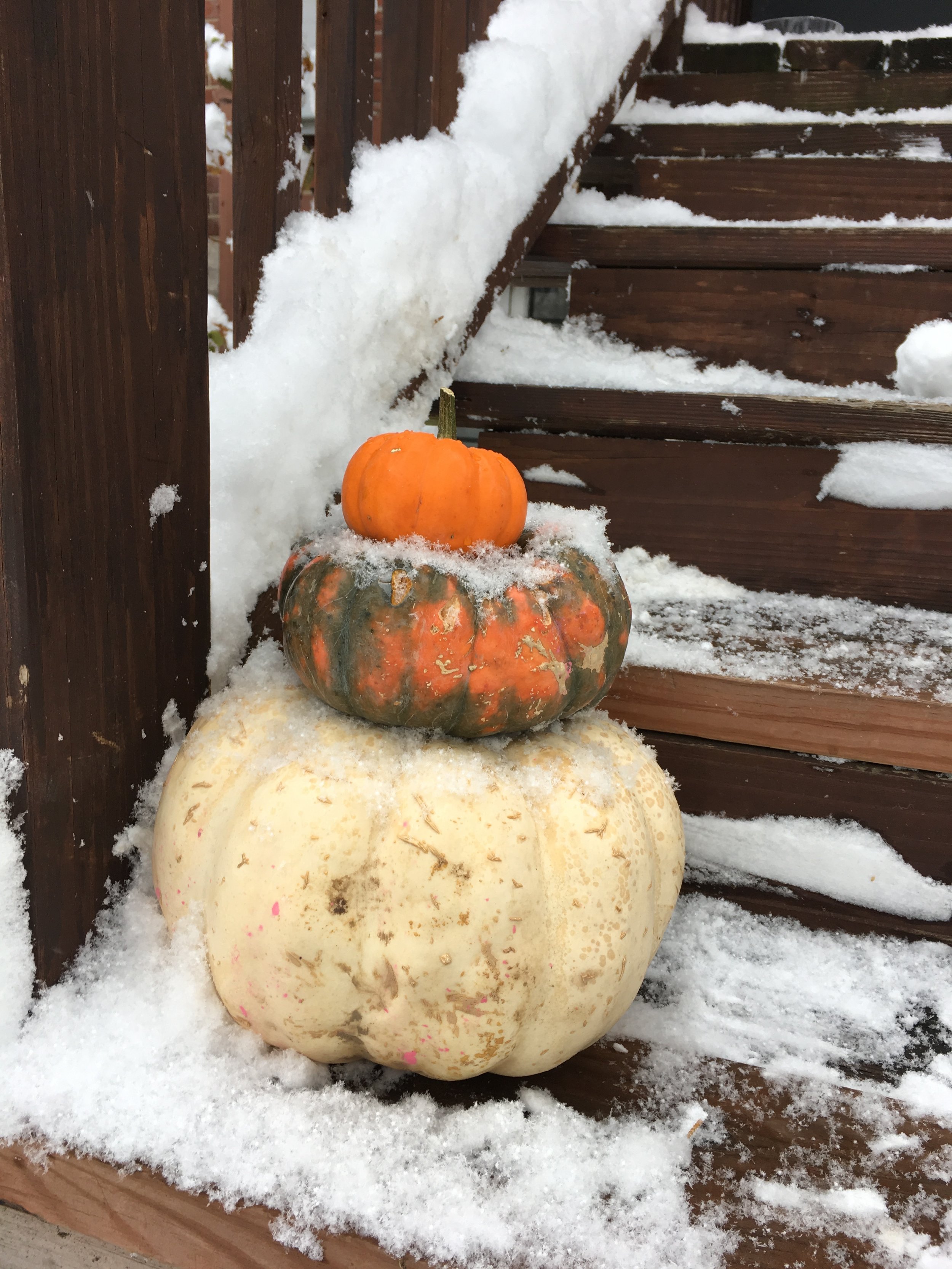“Many different attributes can be measured, even when measuring a single object”
-Erikson Institute's Early Math Collaborative
About a month ago I purchased an assortment of pumpkins to decorate our porch. The pumpkins were a great delight to my children who enjoy stacking them one on top of the other. On a few occasions, I watched as they attempted to stack the littlest one on bottom with no success. Then, they tried the medium one on bottom, which worked, but made the stack very unsteady. They both agreed the best placement was biggest on bottom, medium in the middle and smallest on top. “Like a snowman!” they said.
Lucky for us, it snowed today, giving us the chance to make real snow people.
Children’s understanding of measurement has its roots in infancy and the preschool years…preschoolers can be guided to learn important concepts if provided appropriate measurement experiences. They naturally encounter and discuss quantities. They initially learn to use words that represent quantity or magnitude of a certain attribute. Then they compare two objects directly and recognize equality or inequality. –National Research Council, 2009
Playful Invitation
1. Prepare: Gather small, medium, and large bowls, an assortment of natural materials, and head outside for snow.
Observe the child throughout the interaction. Use the Invitation to Play Documentation Tool to collect data.
2. Invite: Will you help me make a snowman? Lets try to make three snowballs that are different sizes.
3. Play: Begin shaping snowballs using the bowls as a mold. Make one, any size, then encourage the child to help you create the next size. Work together, scooping, packing and rolling the snowballs into shape.
Ask open-ended questions related to measurement: What size is this snowball? Which one is the biggest? Which one is the smallest? Did we make one thats medium size?
Stack them on top of each other to make a snowman. Is the snowman short or tall? Is it wide or thin?
Have the child stand next to the snowman to do a direct comparison. Measure how tall the snowman is on the child’s body. Model Measuring: Wow! This snowman is tall! It comes all the way up to your shoulders. OR This snowman is small, look, it only comes up to your waist. Use your hand to point to the spot where the snowman ends.
Then, switch so the grownup stands next to the snowman and asks the child measure where it comes to on their body.
Continue decorating the snowman with your natural loose parts. (A perfect time to count eyes, nose, ears, arms and other body parts.) Take off a glove and feel the snow. Talk about temperature. Oh! The snow is so cold! My hands are much warmer in my gloves. Also talk about time. We’ve been out here a long time! How much longer should we stay outside?
4. Reflect and Assess: Does the child use math language associated with measurement? Does the child accurately compare using small, medium and large? Did the child understand how to do a direct comparison to measure the height of the snowman? What else did you notice?
Ready- The child is ready if they can make simple comparisons between two items. One is bigger or smaller than another.
Ready to move on- The child is ready to move on if they easily make small, medium and large snowballs, then order them according to size. The child also is ready for more experiences with non-standard measurement if they easily compared their body, and the grownup’s to the snowman.
Extend- Measure “how many” tall the snowman is using a stick, leaf or hand.
Talk more explicitly about capacity. This bowl holds a lot of snow. This one does not hold as much. Ask the child if they would like to change the snowman to make it bigger or smaller. Use language related to adding and taking away during the process.
Math Language
Measurement- when a number is used to show the size or amount of something.
Direct comparison-when you align two objects so they can be compared based on an attribute.
Resources
Clements, D.H., & Sarama, J. (2017)*
National Research Council (2009)*
*full citations can be found on the Research page








